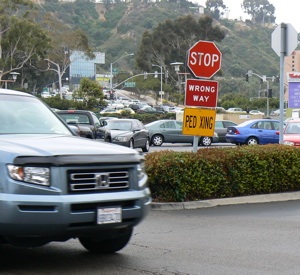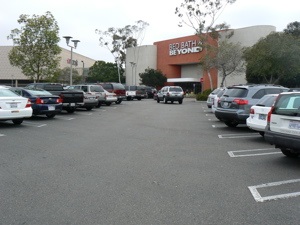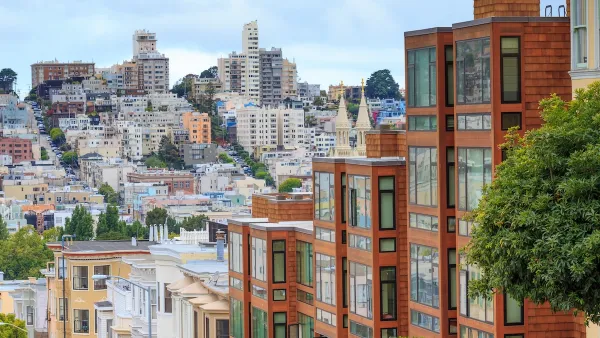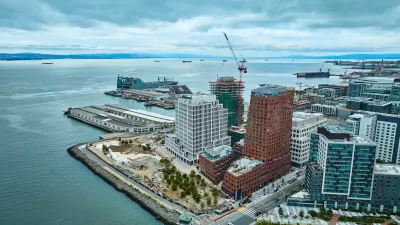As James Howard Kunstler points out in Home From Nowhere, one of the tragedies of single-use zoning is that it branded shopping as an “obnoxious industrial activity that must be kept separate from houses”. Ironically, the places where most Americans shop today come pretty close to “obnoxious” and “industrial”.
As James Howard Kunstler points out in Home From Nowhere, one of the tragedies of single-use zoning is that it branded shopping as an "obnoxious industrial activity that must be kept separate from houses". Ironically, the places where most Americans shop today come pretty close to "obnoxious" and "industrial". Many suburban shopping centers attract hundreds or even thousands of cars per day - a direct result of zoning and parking requirements. In San Diego, Fashion Valley Mall and Transit Center provides 8000 parking spaces. That's a fairly high potential for pollution. Not quite a power plant or a steel mill, but not much more inviting.
Now that development trends are moving toward mixed-use, a common practice in the last decade has been to locate higher density residential housing next to these monstrosities. Take a shopping mall, add residential, and you get an instant walkable "village". And even though they now have people living next door, these malls still attract half the cars in the county.
One of the more poorly-designed retail centers in California, Westfield Mission Valley in San Diego plans a large expansion that will include 250 residential units as well as more retail. In its current form, the congested mall is nearly impenetrable both by car and on foot. Shoppers can expect to park and re-park just to visit a few stores. If history is any guide, expansion would mean placing new retail and residential anywhere it will fit. For example, developers recently located several restaurants in the middle of a Target parking lot near a freeway off-ramp - an impossible setting for pedestrians (see photo). The expansion plan does seek to eliminate sprawling surface parking lots - an encouraging sign - but there is no mention of a major redesign or limiting parking in general.
I'd love to live near a shopping street, but would you want to live next to this?


These aren't the pleasant main streets that Kunstler probably had in mind.
Until developers are willing to part with the big box model, limit parking, and design shopping primarily for transit riders and residents, I'm happy to be zoned away from shopping malls.

Planetizen Federal Action Tracker
A weekly monitor of how Trump’s orders and actions are impacting planners and planning in America.

Chicago’s Ghost Rails
Just beneath the surface of the modern city lie the remnants of its expansive early 20th-century streetcar system.

San Antonio and Austin are Fusing Into one Massive Megaregion
The region spanning the two central Texas cities is growing fast, posing challenges for local infrastructure and water supplies.

Since Zion's Shuttles Went Electric “The Smog is Gone”
Visitors to Zion National Park can enjoy the canyon via the nation’s first fully electric park shuttle system.

Trump Distributing DOT Safety Funds at 1/10 Rate of Biden
Funds for Safe Streets and other transportation safety and equity programs are being held up by administrative reviews and conflicts with the Trump administration’s priorities.

German Cities Subsidize Taxis for Women Amid Wave of Violence
Free or low-cost taxi rides can help women navigate cities more safely, but critics say the programs don't address the root causes of violence against women.
Urban Design for Planners 1: Software Tools
This six-course series explores essential urban design concepts using open source software and equips planners with the tools they need to participate fully in the urban design process.
Planning for Universal Design
Learn the tools for implementing Universal Design in planning regulations.
planning NEXT
Appalachian Highlands Housing Partners
Mpact (founded as Rail~Volution)
City of Camden Redevelopment Agency
City of Astoria
City of Portland
City of Laramie





























